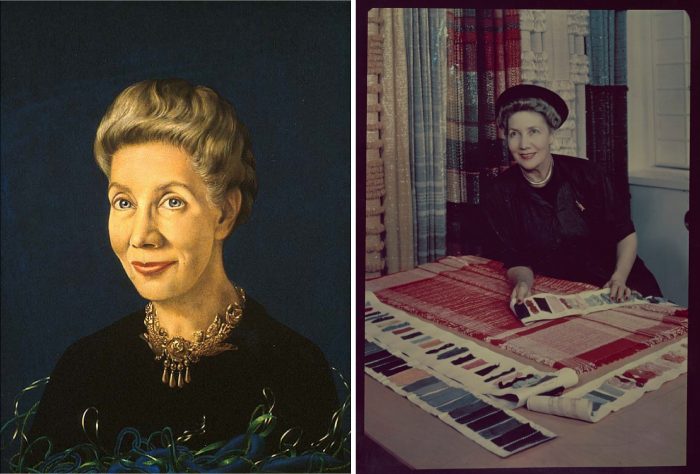Dynamo Dot
How a famous textile designer brought the “Liebes Look” to the bedsides of wounded soldiers.

Dorothy “Dynamo Dot” Liebes was a whirlwind in the weaving world. Throughout the 1930s, she spun luxury fabrics so bold and colorful that their style could only be described as the “Liebes Look.” But when the United States entered World War II, she wondered how an artist like herself could be helpful at a time when “there would be no need for luxuries.” By the early 1940’s, artist and designer Dorothy Liebes had a unique vision, a thriving career, and a reputation for boundless energy and innovation. What she didn’t know was that wartime would bring an opportunity to put her weaving skills to work in an entirely new way. Joining forces with the American Red Cross, she brought professional artists to the bedsides of wounded soldiers—with results that surpassed Dynamo Dot’s wildest expectations.

Guests
- Alexa Griffith, manager of content and curriculum at the Cooper Hewitt Smithsonian Design Museum
- Susan Brown, acting head of textiles at the Cooper Hewitt Smithsonian Design Museum

Listen Now
Links & Extras
- Learn more about the contents and digitization of Dorothy Liebes’ papers in a blog post by processing archivist Stephanie Ashley at the Smithsonian’s Archives of American Art.
- You can also peruse all 39,877 images from the collection online — or, enjoy a sample from Liebes’ press clippings with the 1963 article “The Liebes Touch” from Interior Design magazine.
- Dorothy Liebes’ custom loom, “Ram’s Head,” is in the collections of the Smithsonian’s National Museum of American History.
- Cooper Hewitt, Smithsonian Design Museum is also home to many Liebes treasures! See over 100 stunning samples of her textile work in the museum’s collections.
- Explore these bold pieces and Dorothy Liebes’ career even further in a filmed conversation and collections viewing from Cooper Hewitt.
- Want to hear more surprising stories about key players in art history? Listen to Articulated: Dispatches from the Archives of American Art! This unique series shares conversations, interviews, and firsthand accounts pulled from the Archives’ extensive oral history program and collections.

Posted: 25 August 2022
-
Categories:
Art and Design , Collaboration , Cooper Hewitt Museum , Education, Access & Outreach , Feature Stories







